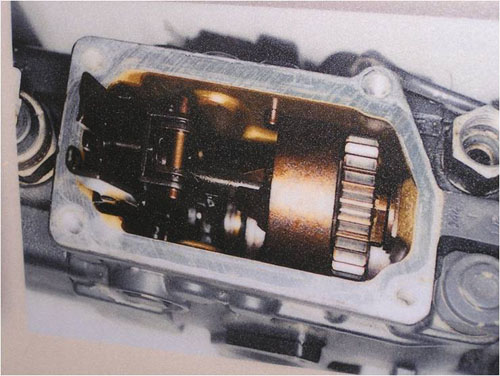Introduction
Biodiesel that leaves the production plant in good condition can become unacceptable during distribution without proper care and attention. Biodiesel can degrade due to oxidation, contact with water, and/or microbial activity.
In general, biodiesel will degrade more quickly than petro-diesel. In one sense, this is a good thing: a biodiesel spill will biodegrade quickly and not cause as many environmental problems as a petro-diesel spill. Nevertheless, both fuels will eventually degrade, and the same good housekeeping practices that apply to petro-diesel will also keep biodiesel in good condition.
Another problem is that biodiesel has a tendency to gel (freeze) at higher temperatures than petro-diesel. Therefore, storage and transportation tanks must be designed to deal with this tendency.
In addition, because biodiesel may not be compatible with some elastomers in common use with petro-diesel, it can cause the degradation of some materials used in hoses, seals, and gaskets.
Oxidation
Oxidation of biodiesel causes sediments to form in the fuel. These sediments can in turn clog fuel filters.
Biodiesel made from unsaturated fats (i.e., vegetable oils) tends to oxidize and thus degrade more rapidly than fuel made from saturated fats, such as animal fats. In addition, any process that removes the natural antioxidants from the oil (such as bleaching, deodorizing, or distilling) will hasten oxidation.

Varnish deposits from fuel oxidation
Storage conditions are important. For example, biodiesel should not be stored or transported in copper, brass, bronze, lead, tin, or zinc because these metals will hasten degradation. Instead, choose containers made from aluminum, steel, fluorinated polyethylene, fluorinated polypropylene, Teflon®, or fiberglass. Tanks designed to store and transport petro-diesel can store biodiesel with no problem.
Heat, sunlight, and oxygen will also cause biodiesel to degrade more rapidly, so storage should minimize exposure to these conditions.
If biodiesel will be stored for longer than about four to five months, a stability additive should be used, especially in more southern climates due to increased temperature and humidity.
Contact with Water
Biodiesel can degrade due to contact with water. During storage and transportation, moisture from the air, or water present in the tanks and pipes of the distribution system, can contaminate the fuel. Up to 1,500 parts per million of water can dissolve in biodiesel. After this limit is reached, the excess water present is “free water.” This free water causes engines and storage tanks to rust and allows microbes to grow in the biodiesel.
To prevent free water accumulation, make sure storage tanks are cleaned and dried before biodiesel is put into the tank. As much as possible, keep only a small air space above the fuel – 2% air space is recommended in order to allow for thermal expansion. More air space may allow the biodiesel to accumulate more water from the air. If possible, drain free water off the bottom of storage tanks on a regular basis.
The dissolved water in biodiesel can also cause problems if the fuel is stored for more than a few months. This water can cause acids to form in the fuel, which can eventually eat a hole in the storage tank.
It is virtually impossible to keep water out of biodiesel since water is frequently present in diesel storage tanks and since biodiesel can absorb water from the air. The best way to prevent water from degrading biodiesel is to use the fuel quickly – within a few months. If you need to store fuel for months or years (for example, to power an emergency generator), then biodiesel may not be your best option. In those situations, it might be better to use petro-diesel or some other more stable fuel.
Microbial Degradation
Like petro-diesel, biodiesel is susceptible to microbial degradation. Microbes will grow given the proper conditions: they generally need water and nitrogen. Deal with this problem by monitoring storage tanks to make sure the biodiesel is not in contact with water. Biocides – chemicals that inhibit microbial growth – can also be added to the fuel and are commonly used with petro-diesel. Biocides are available from diesel fuel suppliers.
Preventing Biodiesel from Freezing
The gel point of biodiesel depends on the oil or fat from which it was originally made. Biodiesel made from saturated fats tends to gel at higher temperatures than biodiesel from unsaturated fats.
In general, pure biodiesel made from vegetable oil can safely be stored at 45° to 50°F. In cold climates, underground tanks can prevent gelling. Above-ground tanks may need to be heated or insulated, depending on the location.
Biodiesel blended with petro-diesel has a lower gel point than pure biodiesel, depending on the percentages of biodiesel to petro-diesel.
Transporting Biodiesel
When biodiesel is transported, make sure the transportation container has been cleaned (unless it previously carried petro-diesel or biodiesel) and that there is no water in the tank.
The tank may need insulation or heating if the biodiesel is being transported in cold weather. Alternatively, the biodiesel can be allowed to freeze in the tank and then be heated at the destination.
Pure biodiesel is not considered flammable, has a flash point greater than 200°F, and can be transported without any warning signs. Biodiesel blends require warning signs if the flash point of the blended fuel is lower than 200°F.
Biodiesel Can Degrade Other Materials
Another storage and transportation issue is the fact that pure biodiesel, and blends with a high percentage of biodiesel, can degrade some hoses, gaskets, and seals.
Ask the equipment vendor if the equipment is suitable for pure biodiesel or high biodiesel blends. Acceptable materials include Teflon, Viton, fluorinated plastics, and nylon. In general, biodiesel is compatible with materials used in diesel fuel systems after 1993.